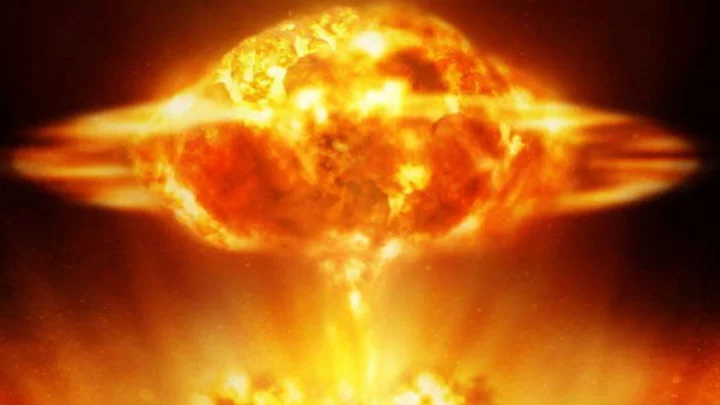On February 5, 1958, two Air Force jets collided in mid-air during a train mission.
Fortunately, all involved survived the crash, but one of the jets carried a Mark 15 thermonuclear bomb, as was "common practice" during training missions. The weapon is now believed to be hidden 13 to 55 feet below the ocean and sand, and the Air Force and Navy divers have been looking for it ever since.
The nuclear weapon is somewhere off the coast of Tybee Island, Georgia, and every once in a while, a high reading of radioactivity is recorded in the area. This causes the US government to scramble in efforts to find the bomb, likely buried in the seafloor.
For two months after the jets collided, the Air Force and Navy divers searched a 24-square mile area in the Wassaw Sound, a bay of the Atlantic Ocean near Savannah, using handheld sonar.
On April 16 1958, the military decided the bomb was "irretrievably lost." The Air Force said the weapon wasn't fully assembled and "there was no danger of an explosion or radioactivity."
Forty years later, a retired Air Force officer began to search for it.
"It's this legacy of the Cold War," said Stephen Schwartz, author of 'Atomic Audit: The Costs and Consequences of US Nuclear Weapons Since 1940'.
"This is kind of hanging out there as a reminder of how untidy things were and how dangerous things were."
However, some experts say that the bomb may be better left buried, even if someone finds it.
Whilst there was little chance of the bomb spontaneously exploding, there was a chance of it exploding during retrieval, and experts would have to remove and dispose of the uranium first. A 2001 report on the bomb suggested recovery cost would start at $5 million.
"The whole Air Force perspective is, it's just not worth it," Schwartz said. "Trying to move it could create bigger problems than if we just leave it where it is."
Schwartz said the only way the weapon will be found is by chance or if a powerful storm dredges it up.
"I won't say it's lost for the ages because I don't think it is," he said, but "so many people have searched for it for so long using some fairly sophisticated equipment and not found it."
Sign up to our free Indy100 weekly newsletter
Have your say in our news democracy. Click the upvote icon at the top of the page to help raise this article through the indy100 rankings.

